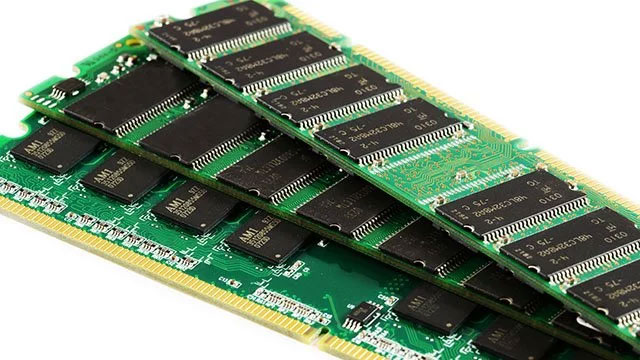RAM is the main memory in a computer that stores data and machine code currently being used. With it, the data on the device can be read and written much faster. Now, this post tells some information about RAM in simple words to make it easy understanding.
Basic Information of RAM

RAM is the abbreviation of random-access memory. It is one of the most important components of your computer. A random-access memory device allows data items to be read or written in almost the same amount of time, regardless of the physical location of the data within the memory. It can read and write at any time, and the speed of reading and writing is very fast. Usually it is used as a temporary data storage medium for operating systems or other programs that are running.
Simply put, RAM is designed to provide fast read and write access to storage devices. Your computer uses RAM to load data because it runs data much faster than it does directly from a hard drive. Without it, doing just about anything on any system would be much, much slower, or make them can’t even run at all.
Metaphorically, you can think of RAM as an office desk. Desktops are used to quickly access important documents, writing tools, and other items that you need to work at that time. If you don’t have a desk, you can store everything in drawers and filing cabinets, which means that it takes longer time to complete your daily tasks, because you have to constantly enter these storage compartments to get what you need and then spend extra time returning it.
The Characteristics of RAM
Random access
Random access means that when a message in the memory is read or written, the time required is independent of the location of the information. RAM can be used for the next task at any time, which makes it suitable for handling a large number of high-speed tasks that the system puts into.
Volatile
RAM is normally a volatile type of memory. The feature of this kind of memory is that stored information will lose when power off. If you need to save data, you must write them to a long-term storage device (such as a hard disk).
The biggest difference between RAM and ROM is that the stored data in RAM will automatically disappear after the power is turned off, while ROM will not. So the best analogy for RAM is to think of it as your system’s short-term memory.
Higher access speed
The writing and reading speed of modern random-access memory is almost the fastest among all access devices, and access latency is insignificant compared to other storage devices that involve mechanical operations (such as hard drives and optical drives). While sometimes your computer still becomes slow with a RAM due to some reasons.
Need to refresh
Modern random-access memories rely on capacitors to store data. The capacitor represents 1 (binary) when fully charged and 0 for uncharged. Due to the more or less leakage of the capacitor, if no special treatment, the charge will gradually lose and there will be errors with the data. Refreshing means recharging the capacitor to make up for the lost charge.
Sensitive to static electricity
Like other sophisticated integrated circuits, random access memories are very sensitive to the static charge of the environment. Static electricity can interfere with the charge of the capacitors in the memory, causing data loss and even burning the circuit.
Other Information about RAM
How much RAM do you need? Just like a CPU and a hard drive, the amount of memory your computer requires depends on what you use for your computer, or what you plan to use for.
For example, if you are buying a heavy-duty gaming computer, you will need enough memory to support a smooth gaming experience. On the other hand, if you use a computer for light Internet browsing, no video streaming, games, memory-intensive applications, etc., you can choose a smaller memory.
How about the categories of RAM? RAM has many types now, while basically RAM memory can be divided into two categories according to the working principle of the memory unit: static random-access memory (SRAM) and dynamic random-access memory (DRAM).
SRAM has the advantage of fast access, but the production cost is relatively expensive, and a typical application of it is cache. Since DRAM has a low unit capacity price, it is widely used as the main memory of the system.